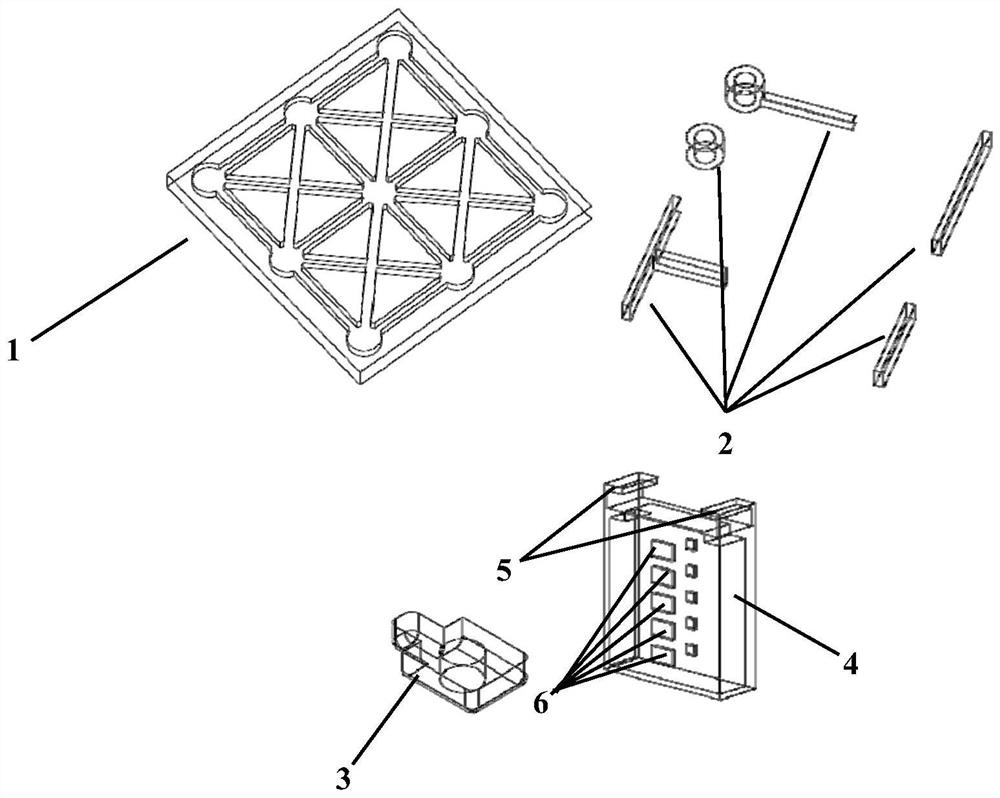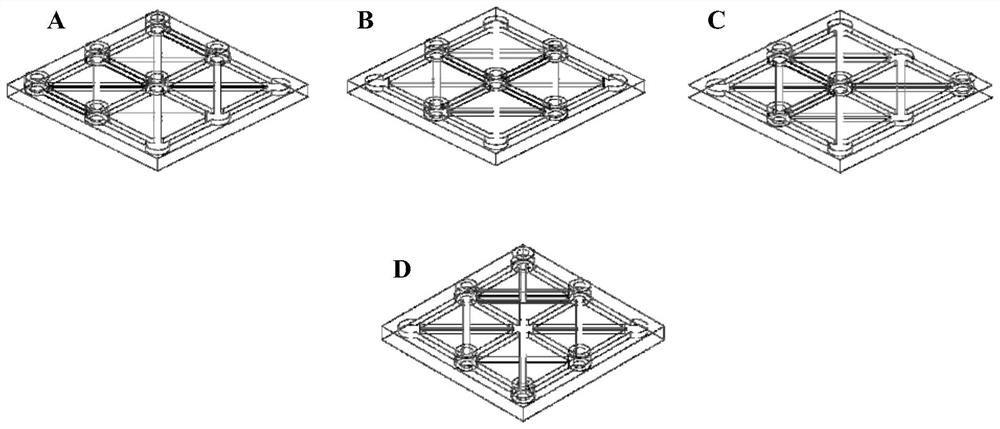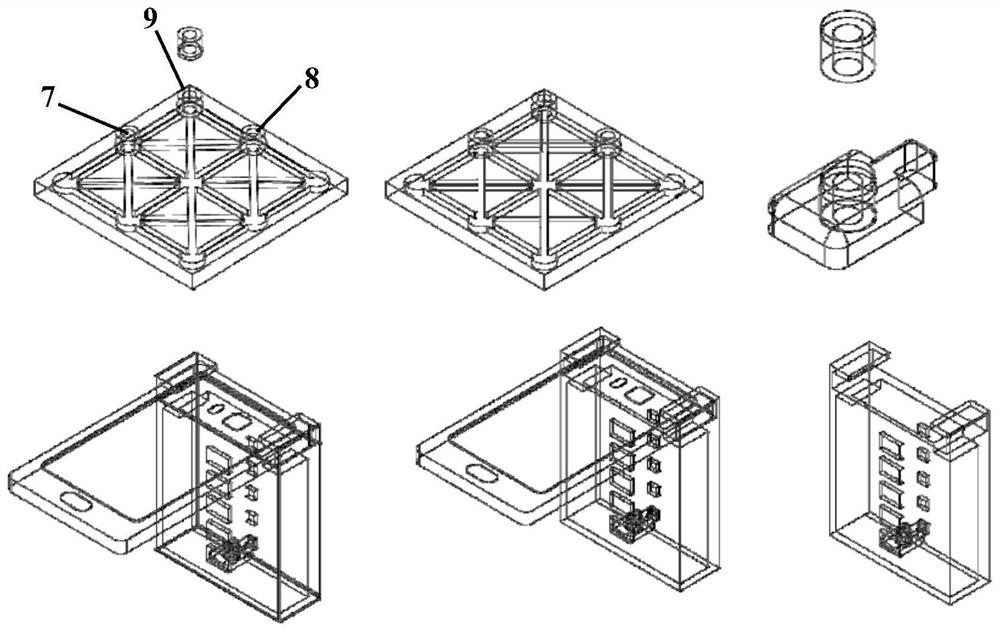Manufacturing method of 3D printing assemblable paper-based micro-fluidic chip
A microfluidic chip and 3D printing technology, which is applied in the fields of engineering and biosensing, can solve the problems that paper-based microfluidic chips cannot be designed and manufactured, microchannel construction is not precise enough, and the operation process is complicated, so as to achieve fast and convenient analysis The effect of detection, broad commercialization prospects, and simple operation
- Summary
- Abstract
- Description
- Claims
- Application Information
AI Technical Summary
Problems solved by technology
Method used
Image
Examples
Embodiment 1
[0032] In order to avoid the interference of the external environment and build a closed channel, the paper-based functional module should be in close contact with the motherboard during assembly. In the same way, each paper-based functional module should be closely attached to ensure that the fluid can be transported quickly. According to this principle, paper-based microfluidic chips with various classical channel styles were assembled to demonstrate that they can construct various detection and analysis modes.
[0033] like figure 2 As shown, the motherboard 1 and the paper-based functional module 2 can be flexibly assembled and spliced into mixed channels of different modes, such as straight-line channels, criss-cross channels, Y-shaped channels and T-shaped channels.
Embodiment 2
[0035] A 3D-printable assembleable paper-based microfluidic chip and its manufacturing method draw the linear relationship for instant detection of hydrogen peroxide as follows:
[0036] like image 3 As shown in the figure, the device was built, the detection area 9 was immersed in 5U HRP solution for pretreatment, and incubated in a constant temperature incubator at 37 °C for 10 min. 0 μmol / L, 100 μmol / L, 500 μmol / L, 1 mmol / L, 5 mmol / L and 10 mmol / L of hydrogen peroxide were added dropwise to sample port 8 respectively, and the two were mixed in the “T” channel. Flow to the detection area 9, react with HRP for 8 minutes and turn blue, remove the detection area 9 module and dry it with nitrogen, place it on the groove 3, and move the groove 3 to the bottom card slot of the detection part. The smartphone is assembled above the signal collection area 5, and the entire device is wrapped with tin foil to eliminate interference from external light sources. Turn on the flash of t...
Embodiment 3
[0039] A 3D-printable assembleable paper-based microfluidic chip and its manufacturing method. The detection steps of hydrogen peroxide in a commercially available 3% hydrogen peroxide disinfectant are as follows:
[0040] According to the method described in Example 2, after diluting the commercially available 3% hydrogen peroxide disinfectant 1000 times, quantitative detection was carried out on the T-shaped paper chip, and compared with the classic potassium permanganate titration method.
[0041] As shown in table 1, the difference of two kinds of detection methods is less, and content is all at 2.50%-3.50%, all can prove that the content of this hydrogen peroxide disinfectant meets Chinese Pharmacopoeia standard. As shown in Table 2, in the standard addition recovery experiment, the standard addition recovery rate of this device is between 93.26%-103.06%, indicating that the present invention detects the high accuracy of hydrogen peroxide in real time.
[0042] Table 1 is...
PUM
 Login to View More
Login to View More Abstract
Description
Claims
Application Information
 Login to View More
Login to View More - R&D
- Intellectual Property
- Life Sciences
- Materials
- Tech Scout
- Unparalleled Data Quality
- Higher Quality Content
- 60% Fewer Hallucinations
Browse by: Latest US Patents, China's latest patents, Technical Efficacy Thesaurus, Application Domain, Technology Topic, Popular Technical Reports.
© 2025 PatSnap. All rights reserved.Legal|Privacy policy|Modern Slavery Act Transparency Statement|Sitemap|About US| Contact US: help@patsnap.com



